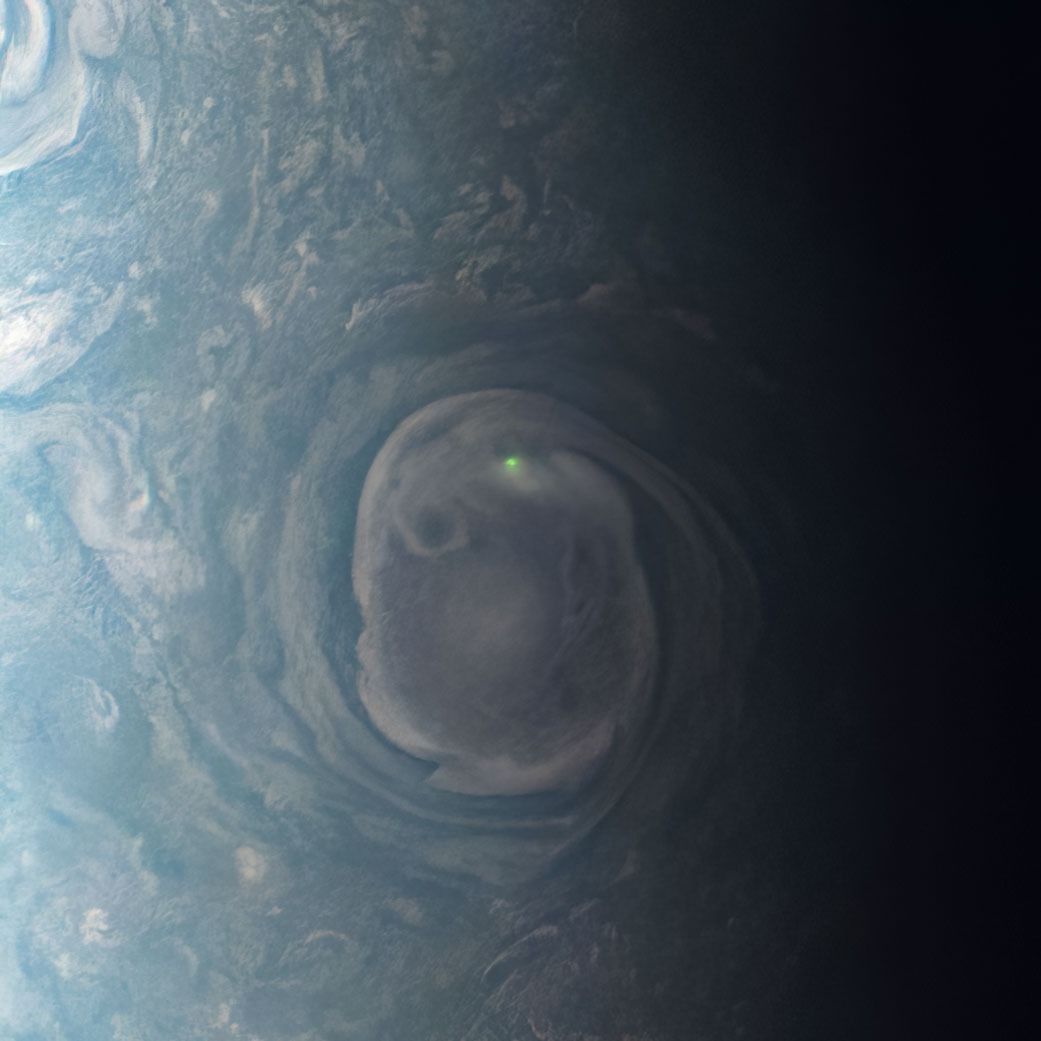Juno has been orbiting Jupiter along an elliptical trajectory since 2016, conducting detailed observations of the gas giant during close flybys over its poles. During its 31st flyby, Juno captured a stunning image of a greenish glow caused by a lightning strike inside a vortex near Jupiter’s north pole, at an altitude of 32,000 kilometers above the planet’s cloud tops. The image was taken in December 2020 but it was released by the agency as late as June 15, 2023.

Amateur scientist Kevin Gill processed the recently released image using raw data collected by the JunoCam instrument. The Juno mission team appreciates the collaboration with the public in processing the images, and anyone can try their hand at image processing on the JunoCam website.
Differences between Lightning on Jupiter and Earth
Juno is no stranger to lightning on Jupiter. The spacecraft has observed many lightning flashes in Jupiter’s dense atmosphere. Studying them has helped scientists determine that lightning on the gas giant is very similar to lightning on Earth. However, despite the similarities, there are some key differences.
“On Earth, lightning is generated in water-rich clouds and most commonly occurs near the equator. On Jupiter, lightning occurs in clouds that contain a water-ammonia solution, but it is more frequently observed near the poles,” NASA representatives wrote in the image description.
Juno’s Plans until 2025
Currently, Juno has completed 51 flybys of Jupiter, with the next 52nd flyby scheduled for June 23. The first 35 flybys were conducted during the primary mission, which ended in July 2021. Juno is now in its extended mission, expected to continue until at least September 2025, as long as the spacecraft remains operational in Jupiter’s harsh radiation environment. During the extended mission, Juno will study the entire Jupiter system, including the planet, its rings, and numerous satellites. The data collected by the probe has provided scientists with a much better understanding of Jupiter’s structure, formation, and evolution.
Earlier, we shared interesting facts about Jupiter.
Source: NASA
